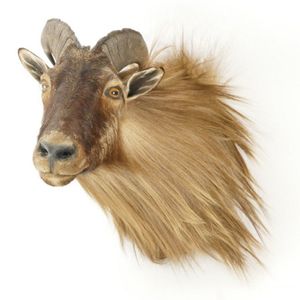Wedgwood Triton Candlesticks Pair
A pair of Wedgwood Triton candlesticks, a pair of 19th century black basalt Wedgwood candlesticks depicting a fin-legged Triton holding a cornucopia form candleholder, kneeling upon a freeform rock base. The candlesticks are a mirror image of their opposite. Edition of 200. Impressed Wedgwood mark height 28 cm
You must be a subscriber, and be logged in to view price and dealer details.
Subscribe Now to view actual auction price for this item
When you subscribe, you have the option of setting the currency in which to display prices to $Au, $US, $NZ or Stg.
This item has been sold, and the description, image and price are for reference purposes only.
- Basalt - Basalt is a hard, dense volcanic rock formed from the rapid cooling of basaltic lava, and makes up most of the earth's oceanic crust.
However it is also the name given by Josiah Wedgwood in 1768 to a fine black unglazed porcelain which he called Wedgwood Black Basalt.
Using this fine-grained stoneware he was able to produce copies of the newly excavated Etruscan pottery from Italy, with a lustrous and smooth, surface, and this new innovation proved to be a huge commercial success. - Cornucopia - The cornucopia, literally the horn of plenty, is a symbol of abundance and wealth. It is traditionally is represented by a curved goat horn overflowing with grain and fruit.
Modern cornucopias are often depicted as horn-shaped baskets filled with food, and this symbol is often associated with the harvest. This decorative device has a long and ancient history, with roots in Greek mythology.
In one version, when Zeus was playing with the goat Amalthea he accidentally broke off one of her horns. To atone for this, Zeus promised Amalthea that the horn would always be full of whatever fruits she desired. This became the cornucopia of the Roman goddess Copia, the personification of plenty. Other goddesses, including Fortuna and Pax, also held the cornucopia.
In furniture and decorative arts, cornucopia as a decorative element have been popular since the 16th century and can be found on items as diverse as light fittings and candelabra to clocks, sculpture and statuary and furniture.
In ceramics, cornucopia shaped vases were popular in the 19th century, in singles and pairs.
This item has been included into following indexes:
-
Wedgwood (England), item types
- black basalt ware 162
- candlesticks 27
Visually similar items

1953 Argus '1953 Football Portraits', large size (11 x 19 cm), almost complete set of Footscray players [5/72]. G/VG.
Sold by
in
for
You can display prices in $Au, $US, $NZ or Stg.

A taxidermied shoulder mount of a Thar, with a lush winter coat. Depth from wall 67 cm
Sold by
in
for
You can display prices in $Au, $US, $NZ or Stg.

Large vintage Satsuma wisteria birds vase 25 cm high signed to base
Sold by
in
for
You can display prices in $Au, $US, $NZ or Stg.

Swarovski Masquerade 2001 Harlequin figure with stand, boxed
Sold by
in
for
You can display prices in $Au, $US, $NZ or Stg.
